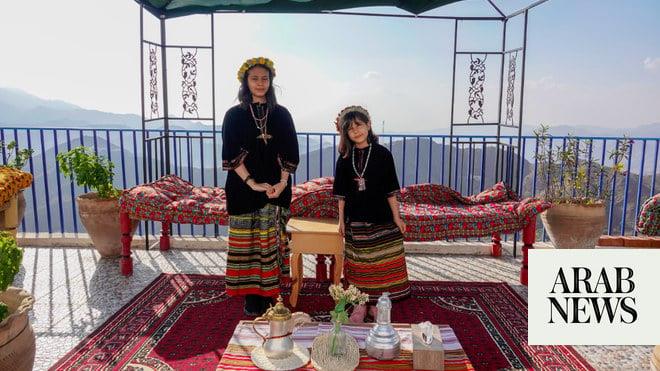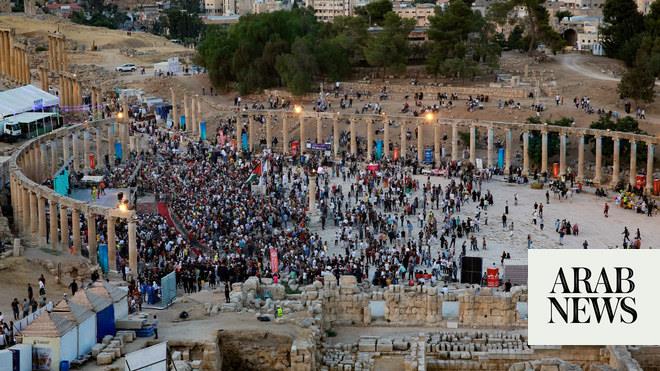
JAZAN: Jazan province this winter is a hotbed of tourists searching for relaxation, walks through beautiful scenery, the chance to sample the region’s famous coffee — and even scouting investment opportunities in an expanding leisure industry.
A plan to build the province’s tourism economy was approved by Prince Mohammed bin Nasser bin Abdulaziz, who is in charge of the Tourism Development Council in the Jazan region. Since then, the Jazan City Track and the Farasan Islands Track were approved as tourist hiking routes.
The Heritage Village, which spans 7,000 acres, showcases the rich culture of Jazan. The traditional architecture and artifacts detail the region’s historical way of life. (AN photos by Huda Bashatah)
The Heritage Village, meanwhile, is an important tourist attraction. During a tour of the site by an Arab News team, the village’s Director Mohammed Ali said that it was popular due to its architectural style and its cultural heritage.
There are several historic buildings made of stone and mud that detail the historical way of life. HIGH LIGHTS
• The Jazan City Track and the Farasan Islands Track have been approved as tourist hiking routes.
• Women of Jazan sell traditional and handmade products at the Heritage Village.
• Visitors can take a ferry to the Farasan Islands, whose reserve was included in UNESCO’s ‘Man and the Biosphere Program.’
“The Jazan region has established a name for itself globally in every sphere, be it business, development, or tourism. In the Al-Raith governorate of the Global Islands, for example, there is one of the biggest model gardens in the world,” Ali said.
The Heritage Village, which spans 7,000 acres, showcases the rich culture of Jazan. The traditional architecture and artifacts detail the region’s historical way of life. (AN photos by Huda Bashatah)
“In the mountainous governorates, coffee is grown, which UNESCO has called one of the best products in the world.”
According to Ali, the village, which spans 7,000 acres, is where the customs and traditions of the mountains, Tihama, and maritime environments come together in one location.
In the village marketplace, local resident Hamouda Hussain is one of a number of women selling traditional products.
The first and foremost important factor that makes the Farasan group of islands unique is the presence of two important Mangrove populations, Avicennia marina and Rhizophora mucronata. (AN photos by Huda Bashatah)
“I have loved sewing since I was a child, and I am here selling my products, which are popular traditional clothes,” she told Arab News. “I also make oud mixtures and incense for the body. I see many tourists who come from everywhere to the heritage village and buy my products.
“Tourists flock more in the winter, spring break, founding day, and national day,” she added.
After visiting the village, visitors can take a ferry to the Farasan Islands, whose reserve is known for its diverse ecosystems and rare wildlife was included in the “Man and the Biosphere Program,” a UNESCO initiative.
The ferry captain’s assistant, Yousef Al-Seeni, said that nothing makes him happier than seeing visitors from all over the world come to the islands.
“We have received many tourists from around the world, and they are pleased with us because the sailing time is only an hour,” Al-Seeni said. As a result, they enjoy us as well as the view of the island and dolphins, as well as the opportunity to indulge in their favorite pastimes like diving, fishing, and a variety of sports like hiking and tasting the delectable seafood.”
Jazan and Farasan are famous for the trade in fish and pearls that are sold and exported to countries around the world due to the abundance of coastal beaches, which are rich in fish, shellfish, and seashells.











